What Arrives Before the Words Do
About the writing process, featuring The Wolf Hall Picture Book
The first book I’ve read this year, 2025, was The Wolf Hall Picture Book. I read it in those fine early new year days of blankets and fairy lights, coffee and deep still mornings of nothingness.
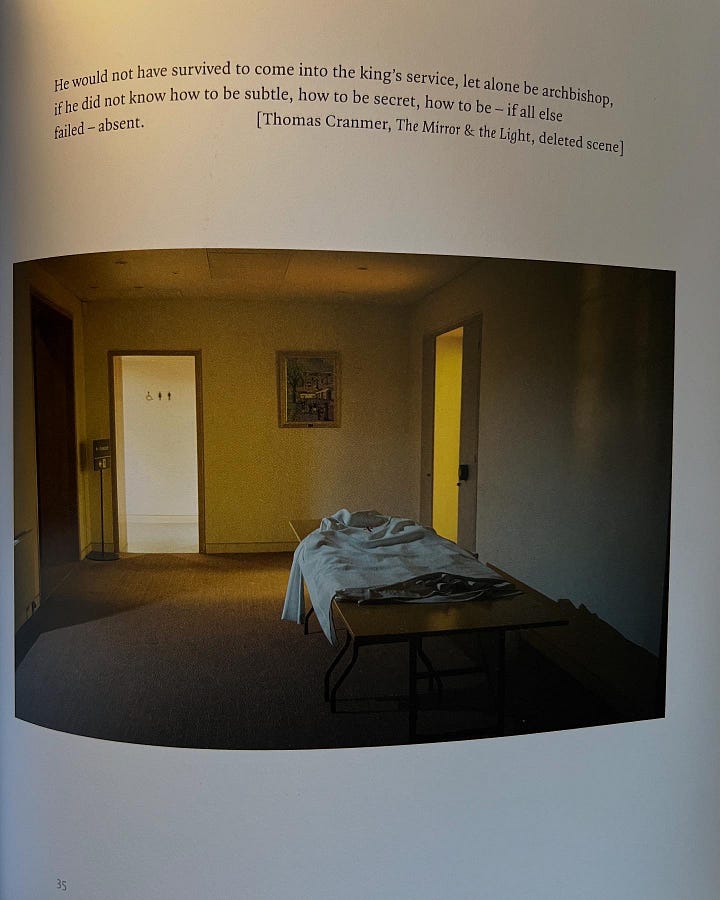
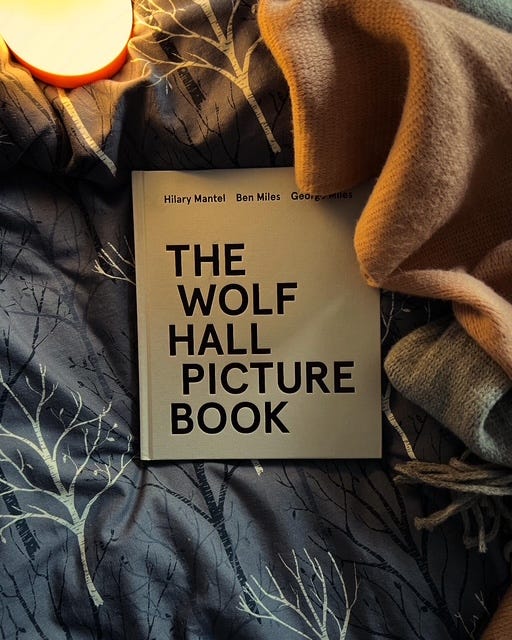
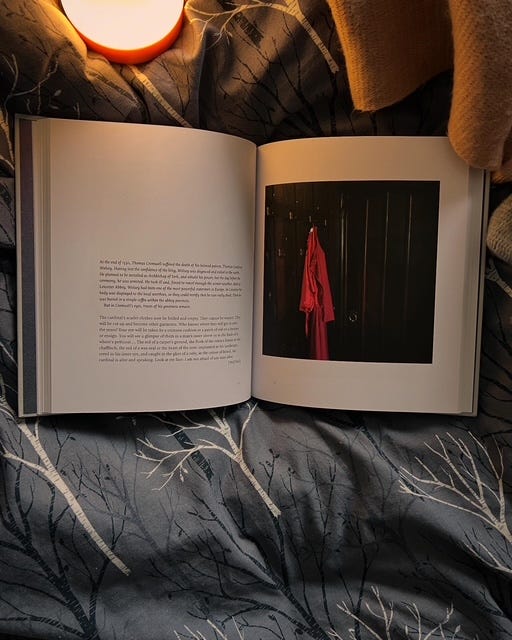
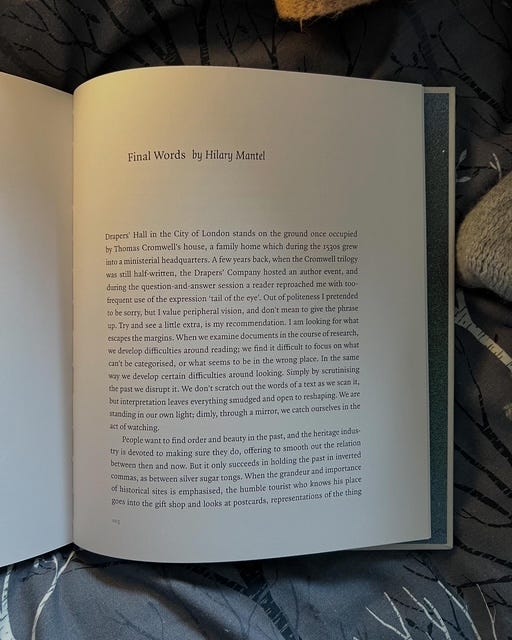
The book is a kind of exploration of the part of the story telling process that is difficult to put into words. It’s literally a book of pictures of places either mentioned in the Wolf Hall Trilogy, or places that capture the essence of the story. It’s worth having for Hilary Mantel’s foreword alone, in which I can almost hear her mind ticking over; thinking about the process of writing, carefully finding the expression to capture the strange process of human creativity, specifically her creativity.
When I am asked about the writing process, I want to be honest, but sometimes I feel my replies don’t go home, they seem either complacent or mysterious. It is hard to be articulate about what happens before the words do - hard to trace that network of neural connections that holds a novel together.
Hilary Mantel
The Wolf Hall Picture Book
I talk often about the ‘magic’ of writing and how it is important to hold that very strange thing sacred alongside the craft stuff and the push to be published, because the magical bit is the place where art lives, that’s the creative DNA that stretches from you all the way back to the people who put their hands on a cave wall and blew ochre over it to form and image. You are part of that lineage of creative evolution. The creative process is, perhaps, an instinctive behaviour then, which explains why our complex brains can’t interpret it rationally. It’s not really a rational process.
What does happen before the words arrive?
My own writing process is an evolving one. But because of the themes I am interested in, it has settled into something identifiable. The themes I am interested in are often about how history emerges into the present, specifically how we connect to the people who came before us, what joins us. When I think back to those parts of the process where my latest projects/books - Blackbird Singing at Dusk (Poetry) and The Ghost Lake (memoir) were not yet books, nor were they cohesive arguments or themes, I find that the place from which the books grow is about a feeling, something that feels a little like a repeating dream, or deja vu. Something tugging at the subconscious. If I think about where poems come from for me, I can imagine something coming up from the ground, something that can’t be seen that you have to reach your hand into and pull at, until it emerges. When I think about where my non fiction prose comes from, that feels like the opposite, like something falling from the sky or a soft mist that must be captured in something like a moth net. I don’t know where these weird images come from, but they are the same images that happen whenever I think about the creative process.

The Process: Blackbird Singing at Dusk
This book started with quite a concrete idea, I set out with an ida of what I thought were interesting themes to focus on, a slightly different idea to what it actually turned out to be, though the desire to be more experimental with the page and with repeating forms in the collection was a key part of how I went about pulling the collection together.
A poetry collection is a series of individual art pieces brought together in an exhibition, a book. The process then is many small processes, each poem being pulled from the ground (in my case), each one having its own identifiable process. Poems always begin, for me, with the feeling of something settling, or falling into place. they begin with a moment of beauty in something ordinary. This process feels like my usually noisy and slightly chaotic brain sees through that chaos to the poem, like when you are in a busy cafe or bus station and you can’t see from one end to the other and then there is a moment where everyone, every person in their own little world, somehow shifts at the same time and a clear view appears all the way down the room, and there at the end of that view is the poem, and it is that view of, for instance, the skeleton of a blackbird looking like a neolithic burial, or something less dark, that is where the poem grows from. Though to be honest, not often less dark in my poetry. As I’m writing this I’m thinking about how much metal detecting is like poetry writing for me, and perhaps that’s why metal detecting, the process of finding stuff in the ground, features so much in Blackbird.
Because I had a concrete idea for Blackbird, I wanted to try and steer that strange magical process of creativity, to find connection points, especially in ‘found’ poetry. I set out to place myself in front of places where I thought that settling, that falling into place, might occur. I spent ages poring over old newspapers and archaeological surveys looking for the place of connection and did in fact find it. I spent ages walking and going to museums and did find poems, did find that sensation of opening up to something. But still, the poems; poems I hadn’t planned for arrived when and where they wanted to, and I pulled them up and put them in a book, and the book became more than I had planned it to be.
I am aware that I sound somewhat unhinged when I talk about process in this way. I feel like this is a kind of experiment for me, an experiment in neurodiverse honesty, a kind of unmasking about process.
What I’m saying here is that there are two parts to the process, there is this weird unnamable thing that happens and then there is the craft. If the poems are water, the craft is the glass/jug/shoe/pond/river that the water goes in and you have some control over how you create that receptacle. And indeed you have some control over how you find the water source, but I don’t think we, or I, have a great deal of control about how it first arrives. We can only be observant and know yourself and look on the map of yourself for the places where that creativity might arrive.
There are a lot of similes and analogies going on in today’s piece.

The Process: The Ghost Lake
I’m pleased to say that there are similarities with the process of prose and poetry for me. Pleased because I feel like there is a kind of core of creativity and the receptacle for that creativity can be changed. It means that there are more tools, more devices for me to use to convey the creativity; the watery, beautiful strange thing that happens in the brain. The Ghost Lake began with me existing in the landscape that I exist in, and being aware of that landscape and myself within it. It grew very very slowly until one day I stopped at the lay-by that I so often stop at and walked onto the bridge over the river Hertford and looked down the valley of the glacial lake, the extinct paleolake Flixton an could suddenly see all the people who had lived there before me, and myself at the edge of that place as if the lake had risen and was lapping at my feet. I was connected, I could see myself connected and I was driven to capture that feeling. I actually had a series of dreams about it just before this experience, in which I had swum in the lake and met an elk swimming towards me. I have a lot of weird dreams. The process after this point, the crafting took years, and took a great deal of research.
The settling; that initial image or rather feeling is so delicate, so difficult to even describe, but it is essential to the process and needs to be available to me if I am writing a years long book. In order to capture that feeling I use tokens - The Ghost Lake features a series of ‘pilgrim badges’ which are actually fossils and pebbles that I picked up on each of my journeys around the lake sites. These then sat on my desk, are still sitting on my desk, and I am able to pick them up and return to that place. Before that, when I was trying to hold the idea of The Ghost lake in my mind while finishing other projects, I wore a necklace with a silver crow skull on it. For some reason, every time I looked at the necklace I felt the feeling that I’d had in the initial stages of finding my path to The Ghost Lake.
Something that I do with all my projects now is to use an instant camera to capture moments as I am trying to find the connection points for the work. I pin these on a cork board in my office so that I can return to the smell of reeds, or the way a certain path feels under the soul of my boot. These photos are rarely beautiful or curated or created to look like something, they are almost always quite random and almost sensory in nature.
I’m just at the start of a new project which is falling into similar pattern - a revelation, research, then the capturing of the revelation in some way that I can pin to a cork board, to reconnect back to that space. I am out with my install camera doing just that.
Which brings me back to the Wolf Hall Picture Book and the joy of seeing the process in picture form.
Maybe this post will be helpful to you, maybe it won’t. Maybe you will see similarities in your own creative process, maybe your own creative process is entirely different.
Either way, I enjoyed sitting in my office as the sun came up, exploring those creative moments with you.
Don’t forget
Week two of the paid subscriber course ‘Thirteen Ways of Looking’ will arrive in a substack post tomorrow! If you subscribe now you will be able to access the previous week’s course notes, and everything else in the archive.
If you want to buy my latest Nine Arches Press collection, Blackbird Singing at Dusk you can do so here: Nine Arches Press
If you want to buy my nature'-landscape memoir The Ghost Lake, the hardback is available to buy from bookshops, online, as an ebook and an audio book, and the paperback, which comes out in April is available to pre order too. More details here: Harper Collins.
Until next time
x




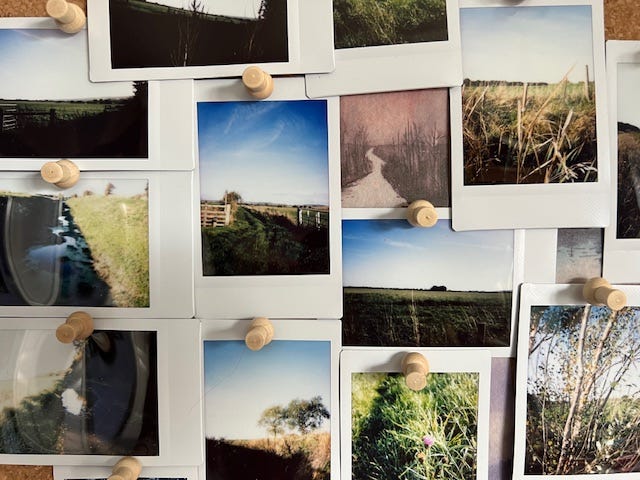


Thank you, Wendy, for your honest and insightful exploration of the space where words emerge, the subtle feelings and ephemeral ideas that hover at the periphery of consciousness. Your essay attunes me to my own creative process, and encourages me to explore those misty realms.
This came at just the right time for me Wendy in my creative journey. I’m now going to pull out and dust off the box of rocks and stones that I still have from my Dad’s house, the ones I kept, that I didn’t take and throw back into rivers and streams or drop into the centre of old stone walls - to handle the remaining ones again and see if there are places they can sit in my life, and be beautiful, and useful. They were his pilgrim badges from his travels far and wide, and might help me to resurface his spirit as I resurface his words. Thank you for the inspiration!